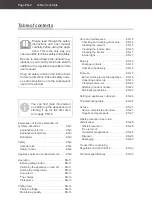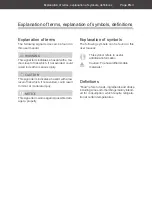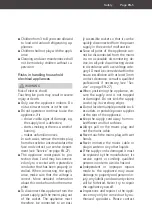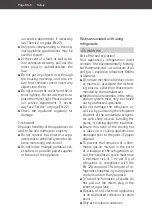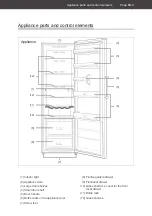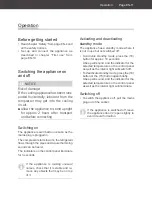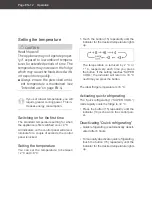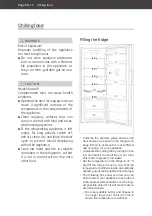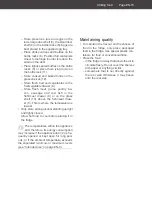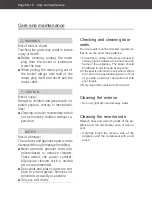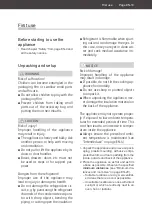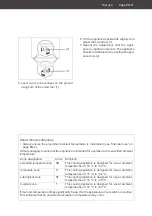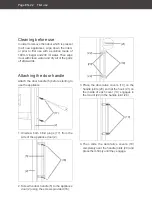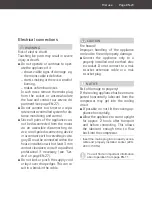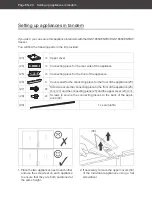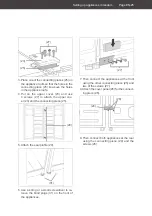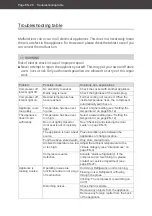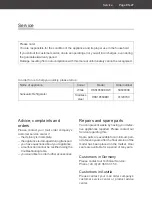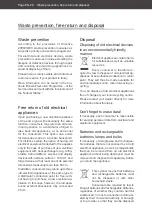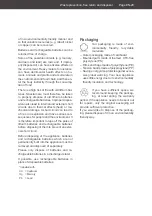
Chilling food
Page EN-14
WARNING
Risk of explosion!
Improper handling of the appliance
can lead to explosions.
■
Do not store explosive substances
such as aerosol cans with a fl amma-
ble propellant in this appliance, as
they can form ignitable gas-air mix-
tures.
CAUTION
Health hazard!
Contaminated food can cause health
problems.
■
Opening the door for long periods can
cause a signifi cant increase of the
temperature in the compartments of
the appliance.
■
Clean regularly surfaces that can
come in contact with food and acces-
sible drainage systems.
■
If the refrigerating appliance is left
empty for long periods, switch off,
defrost, clean, dry, and leave the door
open to prevent mould developing
within the appliance.
■
Store raw meat and fi sh in suitable
containers in the refrigerator, so that
it is not in contact with or drip onto
other food.
Filling the fridge
(12)
( )
(12)
(12)
(12)
(1 )
(12)
(12)
(10)
( )
(10)
( )
(10)
0
(12)
(12)
(12)
(12)
( )
(12)
(12)
(8)
(8)
8)
((
8)
8
(11)
( )
( )
(11)
(3)
(3)
(3)
(3)
(3)
( )
(3)
(6)
(6)
(6
(
(6)
(6)
(4)
(4)
(4)
(
• Combine the drawers, glass shelves and
door shelves as shown in the diagram on
page EN-14 to achieve the most efficient
use of energy for your appliance.
• A temperature setting that is too high or too
low can reduce the shelf life of your food.
This leads to greater food waste.
• Set the temperature in the fridge to +6 °C
and fill the fridge in such a way that the
temperature conditions inside are optimally
utilised, guaranteeing optimal food storage.
• The following tips show you how you can
store foods in your appliance to keep them
in the best possible condition over the long-
est possible period. This will mean that you
avoid food waste:
– Store spreadable butter and cheese in
the upper large door shelf (3). This is
where the temperature is warmest.
Chilling food



